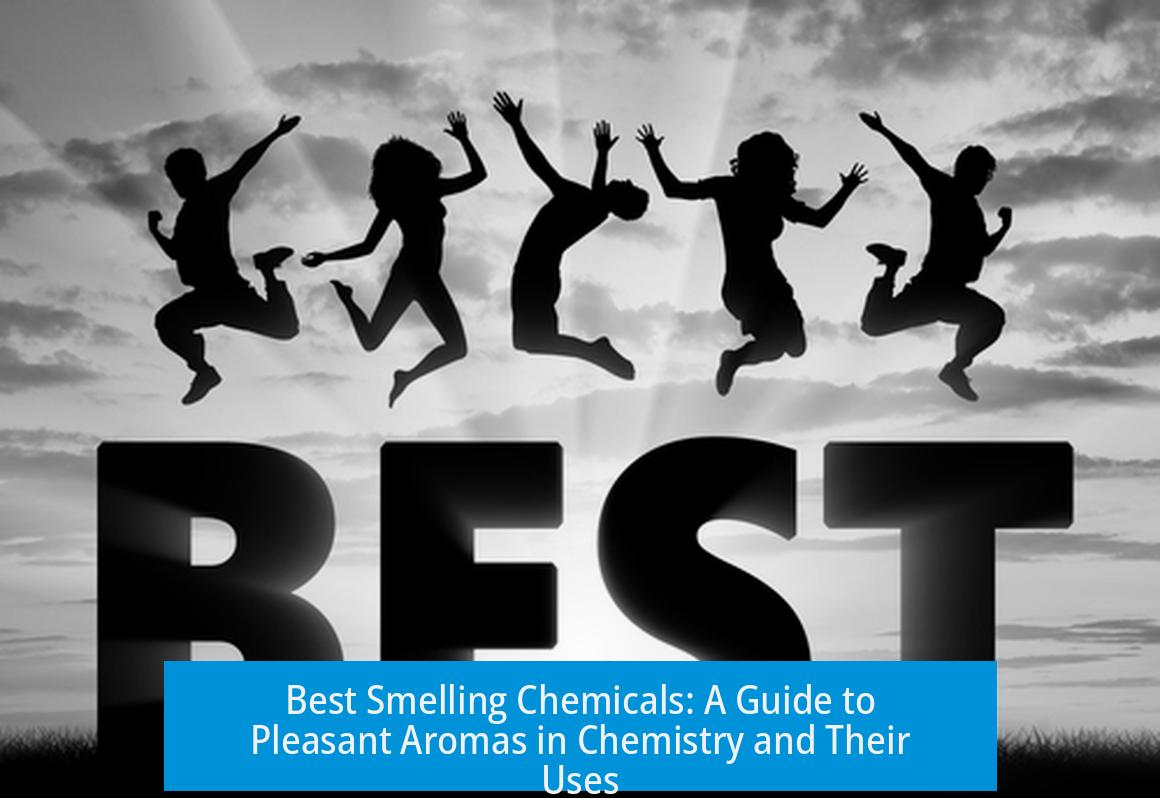Best Smelling Chemical: An Exploration of Pleasant Aromas in Chemistry

Identifying a single best smelling chemical is subjective, but several chemicals consistently rank high for their pleasant, distinctive odors. Vanillin, benzaldehyde, fruity esters like isoamyl acetate, and terpenes such as limonene frequently emerge as favorites due to their familiar, appealing scents reminiscent of vanilla, almonds, fruit, and citrus. Minty compounds like menthol and methyl salicylate also enjoy widespread appreciation. Industrial chemicals like diethyl ether and chloroform surprisingly find fans for their sweet odors, while food-related scents such as 2,3-butanedione evoke buttered popcorn. This article details these chemicals and their characteristic aromatic profiles.
Commonly Appreciated Pleasant-Smelling Chemicals
Vanillin and Its Derivatives
Vanillin stands out as a widely recognized aromatic compound. It delivers a warm, sweet vanilla scent familiar from foods and perfumes. Vanillin is often used in flavoring and fragrance industries for its universally pleasant profile. Some chemists enjoy the mild, soothing smell of vanillin even during laboratory procedures like Thin Layer Chromatography (TLC) staining, despite its weak performance there. Closely related compounds include cinnamaldehyde, which also emits a spicy-sweet aroma, closely linked to cinnamon.
Benzaldehyde and Related Aromas

Benzaldehyde is noted for its distinctive almond-like aroma, often described as the scent of marzipan. Variants such as para-bromobenzaldehyde carry similar pleasant features with subtle differences. This compound evokes a nutty, sweet scent that is comforting and recognizable. Methyl anthranilate, another aromatic, presents a grape-like scent reminiscent of purple Kool-Aid, making it another popular choice among pleasant-smelling chemicals.
Esters with Fruity or Pleasant Aromas
Esters commonly produce fruity and fresh aromas that evoke fruits and sweets. Isoamyl acetate, famously called banana oil, is valued for its strong banana scent, evoking nostalgia for many. Ethyl acetate offers a fresher, almost “funky” fruity aroma. Other esters, like ethyl hexanoate and butyl acetate, smell like apples and bananas, respectively. Cis-3-Hexenyl acetate has green fruity notes reminiscent of fresh vegetation or cut grass. Octyl esters contribute citrus-like aromas.
Terpenes and Terpenoids
Terpenes such as limonene deliver bright citrus scents found in lemons and oranges. Geraniol and linalool provide floral-citrus aromas often used in perfumes. Ketones like methyl isobutyl ketone add sweet, candy-like notes reminiscent of pear sweets. These natural compounds commonly appear in essential oils and contribute significantly to pleasant fragrances due to their complex and fresh profiles.
Specific Chemical Smells and Their Descriptions
Butter and Food-Related Aromas
2,3-Butanedione, commonly called diacetyl, smells like buttered popcorn. It has been used historically to mimic movie theater popcorn aroma. Diacetyl and acetoin form a buttery aroma profile natural to many foods. Cinnamaldehyde and cinnamononitrile produce spicy cinnamon scents, faithful to their natural sources.
Minty and Herbal Scents
Menthol offers a cooling, refreshing mint aroma, often described as “nostril-clearing.” Methyl salicylate, known as wintergreen oil, provides a medicinal herbal scent. Camphor and eucalyptol share minty, fresh scents with slight variations. Such aromas are prevalent in medicinal and therapeutic applications, valued for their clean and invigorating qualities.
Floral, Fruity, and Green Notes
Hexanol is renowned for its fresh-cut grass scent, often employed in flavoring due to its natural green aroma. Piperonal and alpha-hexylcinnamaldehyde display sweet floral smells. Linalyl acetate, a key component in bergamot oil, contributes to Earl Grey tea’s characteristic aroma, blending citrus and floral nuances.
Less Conventional or Unexpected Pleasant Smells
Industrial and Solvent Smells with Positive Comments
Some solvents surprisingly possess agreeable aromas. Diethyl ether offers a sweet, slightly ethereal scent appreciated by some chemists. Toluene also receives positive mention for its mild aromatic odor. Chloroform has a faintly sweet smell, often described as “sweet, sweet chloroform,” despite its historical association with anesthesia. Acetonitrile and trichloromethane are other solvents with subtle pleasant scents.
Other Unique Chemicals and Smells
Several unique compounds are notable for distinct pleasant odors. Nitrobenzene smells of almonds, while safaronal echoes the scent of saffron. Alpha-ionone is admired in perfumery for its profound floral scent. Ethyl methylphenylglycidate offers strong fruity notes. Ammonia, generally pungent, can present a faint sweet undertone, though this is less common.
Negative or Unfavored Smells
Despite many chemicals being pleasant, some, like vanillin, give headaches for certain individuals. Isoamyl alcohol smells unpleasant to many, often likened to dirty socks, demonstrating the subjective nature of olfactory perception.
Specific Fragrance Components Used in Industry
Industry widely exploits aldehydes for their attractive scents. Compounds like benzodioxoles and piperonal serve in fine fragrances. Coumarin offers a sweet vanilla-like scent valuable in perfumery. Bergamot oil, containing linalyl acetate, is a staple for citrus-floral notes. Citral, geraniol, camphor, and eucalyptol are also common in fragrance formulations. Acetophenone is used carefully due to its strong odor, balancing pleasant and overpowering effects.
Miscellaneous and Cultural References
The memory-triggering scent of older devices is sometimes due to chemical components once common, like those in mimeograph machines. Ink solvents in Sharpie markers generate a popular smell cherished by some. Gasoline and ethanol smell familiar and evoke strong sensory reactions. Petrichor, the scent after a rainfall, although not a single chemical, is a natural blend promoting a pleasant oxymoron of earthiness and freshness.
Summary of Key Takeaways
- Vanillin, benzaldehyde, and esters are frequently cited as best smelling chemicals due to their familiar, sweet, and fruity aromas.
- Terpenes and terpenoids contribute bright citrus and floral notes essential in perfumery and flavoring.
- Butter-like, minty, and herbal compounds evoke food and medicinal smells that many find appealing.
- Some industrial solvents like diethyl ether and chloroform surprisingly attract positive attention for their sweet scents.
- Aromatic preferences vary, with some chemicals causing adverse effects or being disliked by individuals.





Leave a Comment